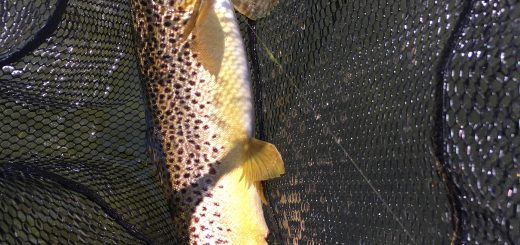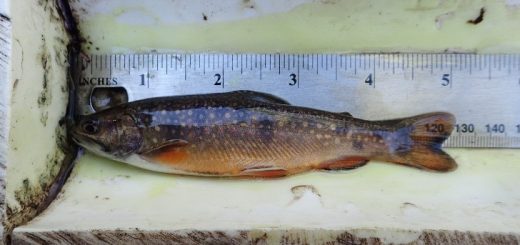High-Seas Stowaways: How the 2011 Tsunami in Japan Caused New Species to Wash Ashore on the U.S. West Coast
The devastating tsunami that struck the Tohoku Coast of Japan in March of 2011 caused destruction on a scale that is unfathomable to most people. A report published shortly after the tsunami found that nearly 20,000 people had died or gone missing, nearly 369,000 homes had been either totally destroyed or severely damaged, and the total cost of the disaster (not including clean-up costs) was estimated to be as high as 225 billion USD (Kazama and Noda, 2012). Eight years later, cleanup efforts at the Fukushima Daiichi nuclear plant are still underway. In recent years, however, debris from the tsunami has been finding its way far, far away from Japan, and along with it some oceanic travelers.
Floating debris, or flotsam, has long been recognized as important habitat for some species of high-seas fish. Natural floating rafts of debris, such as felled trees, typically provide refuge for some fish from predators on the open ocean. Rarely, however, is marine debris flung so far into the open ocean that it makes its way to another continent. Nevertheless, that is exactly what has happened in the aftermath of the 2011 tsunami.
Derelict fishing vessels, floating docks, and other collections of human-made structures started washing up on the U.S. West Coast as early as 2013, carrying with them a variety of marine invertebrates and fish never previously seen in the U.S. Let’s take a look at a few examples of the species researchers have been finding washed ashore from the other side of the Pacific Ocean:
- The barred knifejaw (Oplegnathus fasciatus; Figure 1) is a tropical species native to the coasts of Japan, Korea, and China. It has been reported in Washington, Oregon, and California both swimming in the wild and onboard derelict fishing vessels that were washed out to sea by the tsunami. Fortunately, because temperatures on the U.S. west coast are thought to be too cold for it to reproduce, it is at low risk of becoming an invasive species.

A barred knifejaw. Wikimedia Commons.
- Several Japanese yellowtail jacks (Seriola aureovittata; Figure 2) were discovered in the hold of a fishing vessel washed ashore near Seal Rock, Oregon in April of 2015. A series of genetic tests were performed on these fish to confirm that they were indeed of Japanese origin and not specimens of the closely related North American yellowtail jack (S. dorsalis).

A watercolor drawing of a Japanese yellowtail jack. Wikimedia Commons.
- Finally, a new species of bryozoan (Bugula tsunamiensis; Figure 3) was described after being collected from numerous pieces of marine debris washed ashore from the Japanese tsunami.
These are just a few examples of the 289 or so species that have been found transplanted by the tsunami. The probability of any individual species arriving from the tsunami-swept debris becoming a problematic invader is low. However, as many organisms from marine debris continue to wash ashore, the probability of any one of them becoming an invasive species increases. As a result, it is in our best interest to continue monitoring these new arrivals and to study their potential impacts and pathways of spread. Research into these new arrivals could help us to predict their impacts and safeguard native marine ecosystems.
References
Craig, M.T., Burke, J., Clifford, K., Mochon-Collura, E., Chapman, J.W., and Hyde, J.R. 2018. Trans-Pacific rafting in tsunami associated debris by the Japanese yellowtail jack, Seriola aureovittata Temminck & Schlegel, 1845 (Pisces, Carangidae). Aquatic Invasions. 13(1): 173 – 177.
Kazama, M., and Noda, T. Damage statistics (Summary of the 2011 off the Pacific Coast of Tohoku Earthquake damage). Soils and Foundations. 52(5): 780 – 792.
McCuller, M.I., Carlton, J.T., and Geller, J.B. 2018. Bugula tsunamiensis n. sp. (Bryozoa, Cheilostomata, Bugulidae) from Japanese tsunami marine debris landed in the Hawaiian Archipelago and the Pacific Coast of the USA. Aquatic Invasions. 13(1): 163 – 171.
Ta, N., Miller, J.A., Chapman, J.W., Pleus, A.E., Calvanese, T., Miller-Morgan, T., Burke, J., and Carlton, J.T. 2018. The Western Pacific barred knifejaw, Oplegnathus fasciatus (Temminck & Schlegel, 1844) (Pisces: Oplegnathidae), arriving with tsunami debris on the Pacific coast of North America. Aquatic Invasions. 13(1): 179 – 186.



